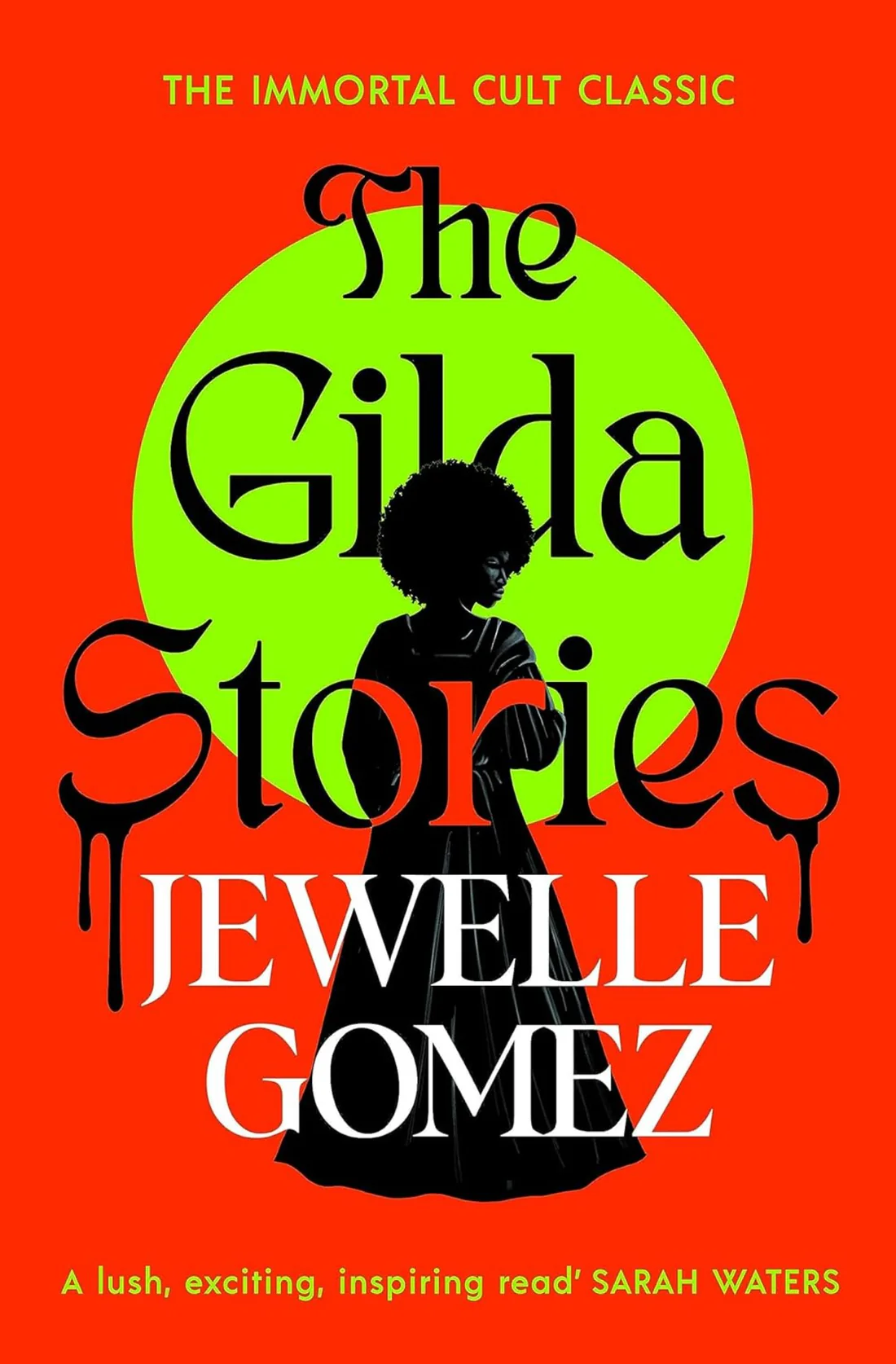
THE GILDA STORIES
Jewelle Gomez © 1991,
2016 Jewelle Gomez
$16.95
243 pages
Content warning: Murder, suicide, racism, gore
The Gilda Stories is, in brief, a good novel. Buy it. Read it. Send strongly worded letters to Netflix demanding that they finally give us the hot Lesbian vampire series we all deserve (a TV adaptation of Gomez's novel was supposedly begun in 2018, but there have been zero updates since).
It is strange how completely the straights have reclaimed vampires, truly the Queerest of the already extremely Queer monster genre. Sure, other creatures have vibes (still waiting for Bride of Frankenstein's Queer coming-of-age to show up somewhere), but vampires started coming out Queer with the Lesbians of Sheridan Le Fanu's novella Carmilla, and then Bram Stoker's closeted Gay core burst out of the erotically charged Transylvanian castle seductions in Dracula. But lately the erotic undertones have remained while the rest has been straightened out, as in the lore of Vampire Diaries, True Blood, and Twilight (although with K Stew in the lead, it's hard to argue that the straightness of the movies isn't a little bendy). At least Gay men have the newest Interview with a Vampire. What do Queer women have? Just the messy film Jennifer's Body and that Canadian web series.
The Gilda Stories is unapologetic in many ways. The protagonist, Gilda, is Black and Lesbian, and, like the other vampires she moves with, she creates found families in defiance of neoliberal nuclear norms.
The philosophy of the book drew me in as it treats the burden of eternal life in ways that other books dealing with the immortals do not: for Gilda and her fellow vampires, it's both agony and a responsibility to continue finding reasons to live. These ethical vampires do not need to kill, and when they take blood, they have to give something back, using their powers to nurture their victim's hopes or soothe their anxieties. It's an oddly sweet dynamic: Gomez describes the vampires in grisly terms, with blood dripping from their jaws, and at the same time she shows them encouraging a bite victim to reach out to an old friend they have been too anxious to contact.
The novel traces Gilda's life so far, starting in the 1850s, when, as a hunted fugitive slave, she is first turned into a vampire, and continuing to 2050, when the world has collapsed and people are again hunting her, but this time because she's a vampire. We see her relationships, her loneliness, and the constancy of her found family. The penultimate chapter, set in 2020, made such good predictions – the use of video calls, the death of magazines, and the fact that romance is the only profitable genre – that I had to check the novel's original publication date (1991).
I found the final chapter, set in 2050, the least compelling. While the earlier parts of the novel are well grounded in novelistic detail, from the dust gathering on the hems of character's garments to the buzz of city life, the finale lurches into a generic dystopian post-climate-collapse future, and it commits the sci-fi sin of making every second noun into a proper one: there are Hunters, Off-Worlders, a Canal.
Earlier in the novel, the relationships between characters are carefully considered, but here they become flattened. The Gilda of the earlier chapters would turn someone into a vampire only after an extended period of agony and only with their permission; here she abruptly turns a woman into a vampire simply because she found her attempting to take her own life.
Where the earlier chapters do occasionally fall flat is that many of the relationships are depicted through telling rather than showing. This narrative style fits as Gilda is a hundred-year-old vampire who views people maternalistically rather than allowing them their full autonomy, but the emphasis on telling can also deprive the reader of some of the emotionality of the characters' relationships. We're told how to feel about certain characters rather than having our feelings develop naturally on the basis of their actions. The strength of The Gilda Stories comes through when Gomez allows her characters to fully develop by means of interactions, nuances, and beautifully specific details. The vampires, for example, have to take specific steps to ensure that the soil of their birthplace is woven into their clothes, their shoes, and their comforters, a detail that makes the reality of their lives so much more visceral.
So read this book, love it, and demand more stories with Queer women vampires than Jennifer's Body.
Support the Seattle Gay News: Celebrate 50 Years with Us!
As the third-oldest LGBTQIA+ newspaper in the United States, the Seattle Gay News (SGN) has been a vital independent source of news and entertainment for Seattle and the Pacific Northwest since 1974.
As we celebrate our 50th anniversary, we need your support to continue our mission.
Your contribution will ensure that SGN remains a beacon of truth and a virtual gathering place for community dialogue.
Help us keep printing and providing a platform for LGBTQIA+ voices.
How you can donate!
Using this Link
Text "SGN" to 53-555
Or Scan the QR code below!


